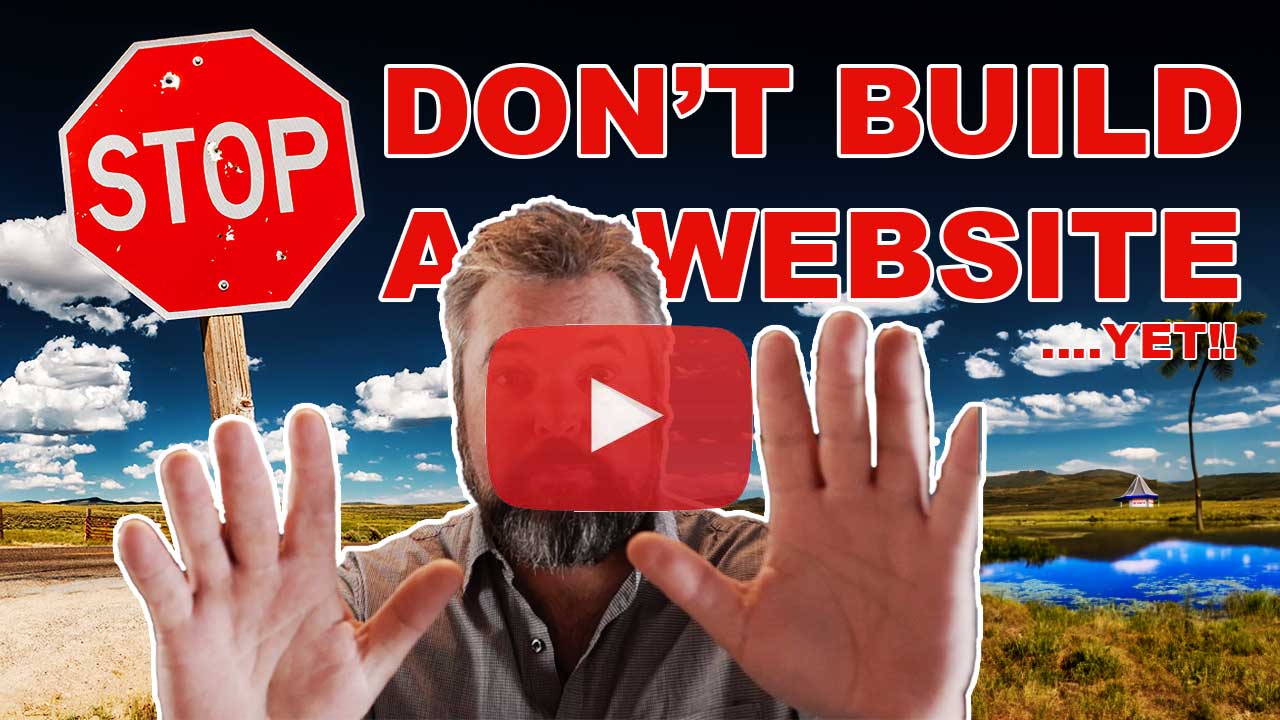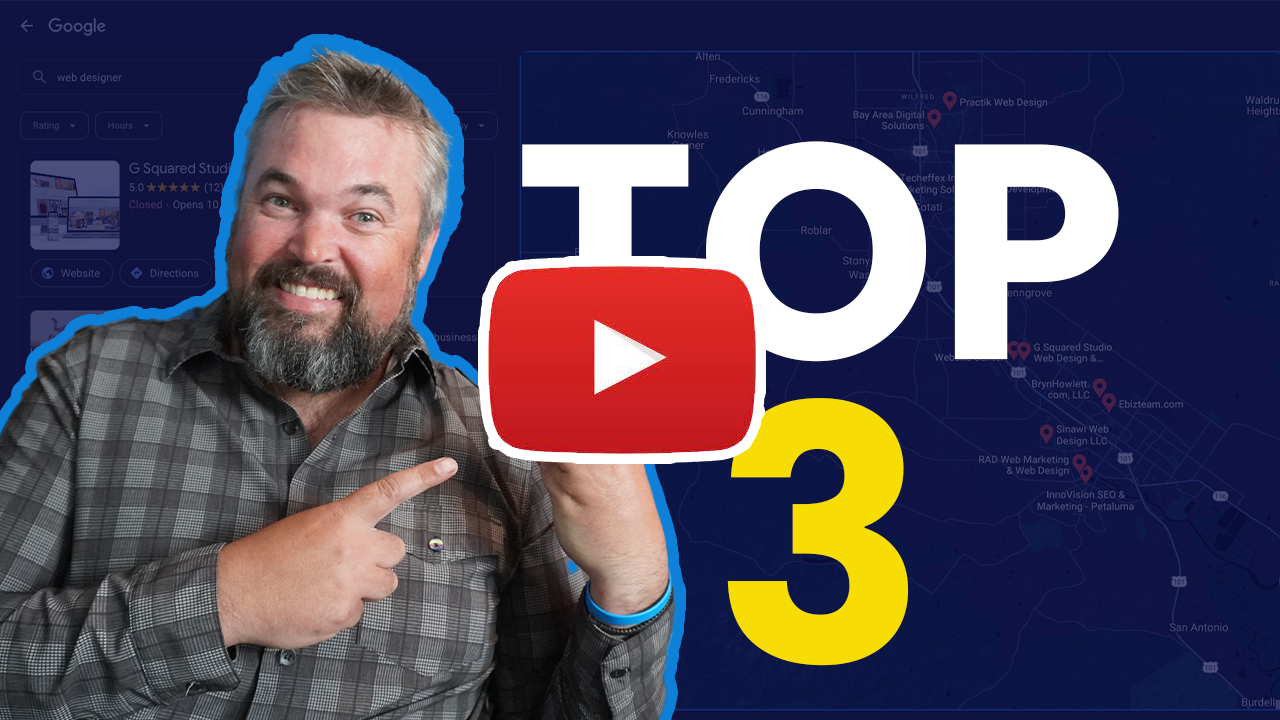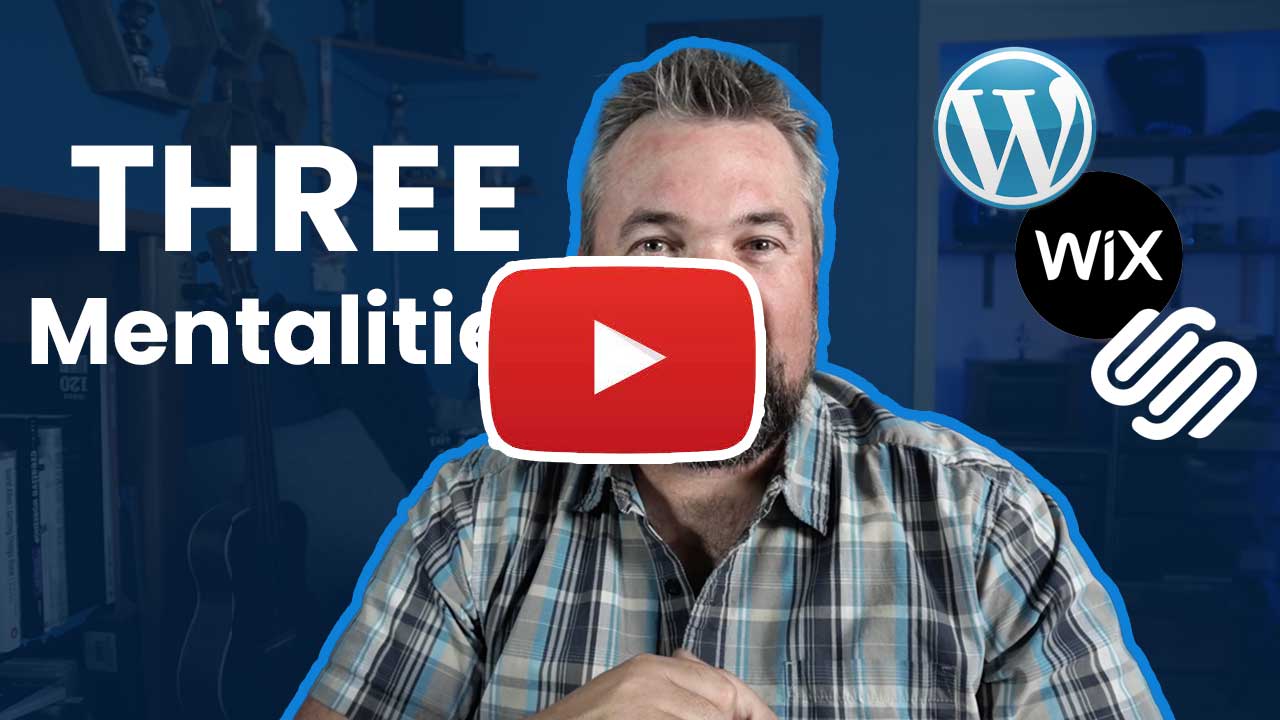
Taking YouTube seriously, finally: My YouTube Journey and Small Biz Tips
December 7, 2023
Target Market Essentials Streamlined for Small Business Growth, with chat GPT
December 21, 2023Don't go starting a website yet. There's seven things you must do before you either hire someone or start building a website all on your own.
Hi, I'm Garik Goodell, owner of G Squared Studio, and in this video we're going to go over the seven things you must do to save yourself either thousands of dollars if you're going to hire a professional or thousands of hours if you're going to build a website yourself. And guess what? Number seven is going to be something that most websites do, but they don't actually do it right? They could definitely be doing it better, so stick around to catch that last one, which also in my opinion, is the most important part of having a website. So number one, your logo. Tremendously important part of your business. It is going to, I mean it's your branding. It is crazy important. It's what's going to be on all your business cards and on your website and potentially on your products and just it's going to be the thing people see most and interact with most that helps them think of your business.
So it's really important to lock this in. You can go about it a couple different ways. You can go the less expensive route, like using some modern AI tools or companies like Fiverr, or you can go the route more traditional route, which I suggest, which is working with a graphic designer. Through that process, I guarantee you'll typically end up with a better product that you are more in love with and more represents what you truly want. Number two, this is actually like a slight extension of your logo. Make sure your fonts are locked in. A lot of business owners don't think about fonts, they just type up their newsletter and send it out times new Roman or however it comes. But keeping fonts consistent across all your marketing is actually a really great thing to do. It's going to create a more cohesive experience when someone either gets your email, goes to your website, gets a brochure, gets a gift certificate, any of those things to have consistent fonts across it all.
Just make it feel more your business, make it feel more personal. I suggest using Google fonts for your copy and title fonts and things like that. So it provides a really consistent experience across all internet platforms. The other thing with fonts is you don't want to get too crazy. You can have up to three main fonts that you use. You want to have a title font, which is going to be the big titles on your website or the big letters on your brochures and things of that nature. A copy font, which is going to be the font that most of the dense copywriting is done in. And then number three, you can also have an accent font that's going to be more playful font, something to utilize in a few little places here to draw the eye or call attention or even just add a little whimsy to your marketing if that's something that is in alignment with your business.
So the other thing about fonts is that if you do work with a graphic designer on your logo, ask them about a corporate style guide that will be taking your logo. Then also figuring out fonts for you on top of fonts as they also help you pick a color palette. So that's number three, color palette. You want to pick colors that you associate with your business that again you use across all your marketing. If you use all these across your marketing, again, you're going to have a more consistent experience. People are going to see your business card in a random place and be like, oh yeah, that's Joe. I remember Joe because I went to his website and I've seen, I've engaged in, interacted with his marketing enough. I know what Joe's color palette and fonts are, and it's actually a subconscious thing. They're not like, oh yeah, that's Joe's blue.
Maybe they are sometimes, but that's not typically what they're doing. They just look at it and go, oh yeah, that's Joe number four. This is a huge item. This is a piece that should be done really early in the business but also should be reevaluated as your business grows and changes and you add potentially new services or products or things of that nature. That is who is your target market. I know there's a huge topic you can go on forever about this. I will actually be doing a follow-up video on this video on all of these topics, like a video for each specific number, and this will be a big video talking about target market. You can focus on the classics of classic demographics, age, gender, income, single family home. There's just all these kind of general things that have always been used for demographics over the ages, but there are some changes these days.
People are now focusing a little bit more on the value-based system. So you could have a 40-year-old woman and a 65-year-old man and they're both into golf and have the same values, and if you're selling golf products, you want to hit both of them so you think more about their values and things of that nature to make sure you can speak to who they are. Imagine you get a gift from your grandma and imagine you get a gift from a buddy. You are going to have a different, if you're going to write them each a thank you note, those notes are going to sound different. I'm guessing they're going to sound different unless you got a really cool grandma. So if you are speaking to grandma, you're going to use these words and have this approach to how you say it. And if you're speaking to your buddy, you're going to have different words and a different way you say it.
So you want to think about who you're talking to through your website to who you're selling to. So then those people that you're trying to speak to feel that you're talking to them gets them more comfortable. So who is your target market? Who is your target demographic? And once you know that, it's really good to think about the pain and gain theory in marketing. So that is number five, pain and gain. So this is terms you might have heard of. Zig Ziglar has a famous quote that says, lemme just look at it here for reference so I make sure I get it right. He said, people don't buy for logical reasons, they buy for emotional reasons. There's been some marketing people who have kind of manipulated it slightly and it works a little bit better, which is people buy based on emotion and then use logic to justify it.
So that's a really important thing to think about in your business with whatever you're providing or selling service product, what is the emotion that you are serving for your client? Again, I'm going to have another video on this whole topic. We'll dive a lot deeper, but just something to think about. So let's just use a massage therapist for an example. So massage therapist is like, oh, I make your body feel good. That'ss a perk, that's a benefit. It's what you do. But that's not the emotion. That's not why someone comes to you, especially if they don't see massage therapists regularly. They come to you because they're sad or frustrated that they can't do the things in life that they could do a couple months ago before their back got all funky. So that's the emotion. You want to focus on that frustration or sad, but you can help alleviate for them so then they can go be happy and not frustrated or excited to go live life and do the things that they care about doing and are passionate about doing.
So that's the pain and game theory. You want to think about that and have that locked in because that comes in so many places on your website. When you're speaking to your audience, you don't just focus on the little services you provide. You focus on the results that they receive from those services or the results they receive from that product that helps them live the life they desire. And number six, this is just something to make sure you have in your mind and your processing before you start this process because it will help you get the scope of what you're working on. And that is the site map. So a site map is basically the pages, individual pages you are going to have for a website. So the classic are the classic four. We have homepage, we have about page, we have service slash product, depends on if you're a service or a product-based business.
And then four is contact. Those are the four minimum pages that every website should have. If you're a business, there are some additional thoughts. Are you going to utilize a blog to help grow your business? Are going to do you have multiple products or multiple services and you want to have sub menus or sub pages under your services tab? Do you have a team or a staff? So you want to have sub pages under your about section or has your company been for around for 200 years and it's something that really should be put out there so people know the history and the importance and the value and the power and the amazingness that you've been providing for centuries. So those are the things you want to think about with your site map. Good to have that sketched out. Doesn't have to be locked in because things can always change, but you still want to have that global overarching perspective of what pages you're going to be dealing with on your website.
Here's number seven. Really the most important thing. Thanks for sticking around this long hope you're getting value from this video. But number seven is your CTA or as many people call it a call to action. If you have a piece of marketing and you don't have a call to action, you shouldn't have that piece of marketing, every piece of marketing. The whole point of it is to help a potential client take that step forward that it is you want them to take. So on your website, it's no different. You want to make sure you know what the number one call to action on your website is. This should be something that you think about way before you start your project. If you're working with a web developer or starting it on your own and you don't know what your main ask is, you should pause and really figure that out.
So there's many classics. There's the book now. There's the book of consultation, there's the call now there's the download this freebie. So there's a lot of different things and you got to figure out what is going to help your business move forward the fastest. What's also the appropriate ask? So let's go back to that massage therapist. Let's say that massage therapist book is wide open. They're just wanting clients. Then they're of course just going to have that simple book now button throughout the site, up top, down at the bottom of pages and all the appropriate locations on their website. They're going to have a book now button, let's say a year from that because their website's so amazing because they worked with me. No, just say their website is so amazing that now they have a really solid book of business. They have quite a bit of clientele, but there's always maybe room for more.
They want to just be open for more, but they want to narrow that down. In that case, I would suggest doing more like a form that someone has to fill out where there's some questions to answer so they can really find out what it is they need. They can learn a little bit about the client and kind of put a little bit more of a barrier to entry, but still have that option opportunity for people to show that they're interested. So what is your call to action that you want for your website? If you don't take anything else away from this video, please take this away. Figure out that call to action. And again, if you want more information on this, I will be putting out a video in the future that dives really deep into this specific element. So that leads into my last bit.
Please make sure if you got value from this like it. If you are interested in deeper dives on any of these subjects, please subscribe. Hit that notification bell. So when I do come out with those future videos, you will get notified. If you have any questions about these elements, please let me know. Put it down in the comments. I'll make sure I address those things. When I make those more specific videos, I'll probably also answer some of those things in the comments if they pop up. And if there's any other things that you think I missed that is super important to do before you start a website project, put that down in the comments as well. Be real appreciative to have that feedback. Smash some things because what people say when they finish YouTube videos, smash the like button, smash the bell, do crazy stuff within the constraints of your comfort zone. Oh, okay. I hope this was valuable to you. I appreciate you being here. I hope to see you in the future or really people say that, but I hope you see me in the future. I can't see you. I know you're there and I appreciate you for it, but I can't see you. Thank you so much. I hope you have a great day and great success.
Rewind.
Rewind. Yeah,
That's not how it works.




